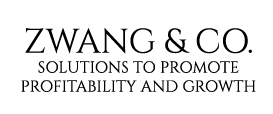Now that I have had a chance to recoup from the marathon called drupa, I wanted to share some thoughts and highlights. I have been to eight drupa’s since my first one in 1986. As a result, I have been witness to many developments that have impacted our industry over that time, including the move from analog design and prepress to digital, the first wave of digital electrophotographic presses, and many other incremental developments that have led us to where we are today. But for me, drupa 2016 showed more promise for the future of graphic arts than any of the others I can remember. I would even go so far as to call it a watershed event, although it really did take years of incremental and parallel development efforts in many areas to get to this point.
The excitement at Messe Düsseldorf during the show was palpable. While the total visitor count for the show was down from 2012, this was mostly attributable to the shortened length of the show. In fact, the visitors per day count this year was actually up on most days. More importantly, the vendors had very innovative products that are much more compatible with the future and the changing requirements of print production and content distribution. And for the attendees, there was not just a willingness to purchase; in many cases they did it with a vengeance, planning new directions and retooling of complete plants of equipment.
True Digital End-to-End Workflow is Here
This excitement was in part driven by the availability of ‘true digital’ end to end workflow and equipment solutions and processes. This starts with the design process, and continues through to order entry, plant scheduling, automated or semi-automated production, from print through finishing, tracking, shipping and invoicing. And the interesting and perhaps more important part is that, while this could be done with single vendor systems in the past, now it can be accomplished with disparate systems and equipment. This is increasingly crucial, since demand for purpose design systems is increasing, and would usually require a multi vendor approach.
Production Inkjet Takes On a New Life but Offset is Not Dead
Continuous feed web production inkjet solutions were there in volume, and as expected and written about in my production inkjet series, they are ready to support a much broader base of applications beyond transaction and direct mail. However, while the arrival of production inkjet for use beyond its historic transactional, direct mail and book markets was apparent throughout the show, it was not just in continuous feed web presses; there were also multiple sheetfed solutions. Heidelberg showed impressive results with its Primefire B1 sheetfed production aqueous based inkjet press, although the company also showed its XL 106 Offset press make ready and print of three 16 page forms in about 7.5 minutes. With that kind of performance, I would expect Heidelberg will be selling offset presses for a while. There were other sheetfed production inkjet presses being offered for sale and delivery. In aqueous based inkjet they also include the B2 Fujifilm JPress 720S, the A3 Canon Océ VarioPrint i300, and the new Xerox Brenva B3+ press. Additionally, we were introduced to the Canon Voyager, a surprise technology demo. This 7- color B2 sheetfed ‘offset’ production inkjet press was running at 3000 sph and producing photographic quality print on a wide variety of untreated substrates. I am looking forward to seeing where Canon takes this. In the “almost ready for primetime, but not shipping in the very near future” category, we also saw the Landa portfolio of aqueous based inkjet presses up and running. Konica Minolta and Komori showed co-developed UV based sheetfed production inkjet presses. Komori showed its Ipremia IS29, while Konica Minolta officially launched the B2 format AccurioJet KM-1. Konica Minolta also showed a technology demo of a B1 format press, the KM-C.
Click here to read the full article on WhatTheyThink.com: http://whattheythink.com/articles/81318-drupa-2016-watershed-event/







